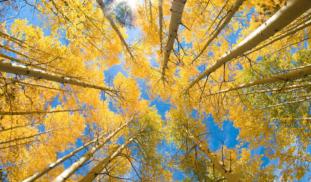Please wait...
About This Project
In the Willamette Valley, there are mysterious stands of aspen far separated from any other wild aspens, whose origin is completely unknown. We believe these trees were brought here by cataclysmic floods originating in Montana ≈15,000 years ago. Through in-depth genetic comparison of these “lost aspens" with others throughout the west, we can determine their origin. This could be the first study showing dispersal of any species by massive floods.
More Lab Notes From This Project

Browse Other Projects on Experiment
Related Projects
How do polar bears stay healthy on the world's worst diet?
Polar bears survive almost entirely on seal fat. Yet unlike humans who eat high-fat diets, polar bears never...
Uncovering hidden insect diversity associated with a likely undescribed gall-forming midge
Does a likely undescribed species of gall-forming midge (pers. comm. Ray Gagné) on Eriodictyon plants (Yerba...
Macrofungi of the California archipelago
The eight islands of the California Archipelago are a well-studied biodiversity hotspot — but we know almost...


